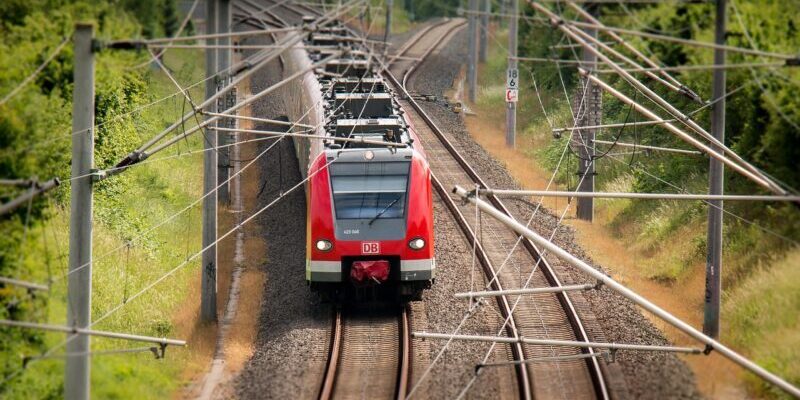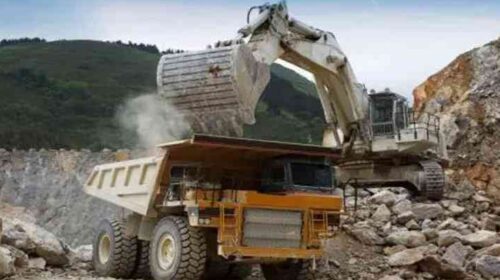Almost all roads lead to the Lobito Corridor
It was only in 1931 that the first shipment of copper from Katanga arrived in Lobito, but the railroad that allowed to bring the riches from the then Belgian Congo, today the Democratic Republic of Congo, was born from a Portuguese law of 1899.
At the head of the project was the Scotsman Robert Williams, who had been a friend of Cecil Rhodes and who understood the advantages of the Benguela Railway: for the Portuguese, it made it possible to link the Angolan coast to the Central Plateau and even further to the province of Moxico ; for the Belgians, it gave them a much shorter access to the Atlantic that saw their own territory with almost no maritime exit; and for the British, through a connection to their own railway network in the two Rhodesias, it also allowed the transportation of ores extracted from present-day Zambia.
The works ended in 1929, with the rails connecting Lobito, on the coast, to Luau, on the border, extending along the 1301 kilometres. But the three decades it took to complete the project clearly show the difficulties encountered.
On the one hand, the First World War, also fought in Southern Africa, forced everything to stop much longer than the four years that the conflict lasted.
On the other hand, the mountainous areas and the various rivers along the way forced some engineering feats and the construction of spectacular bridges that are still part of the Angolan landscape.
The costs turned out to be extremely high, but nothing that could be compared with the dividends obtained from transporting goods.
At the time, passenger transport was secondary, as ores were king, but there were carriages with various levels of comfort.
With its variants, the Benguela Railway reached a maximum of 1679 kilometers and on its way to the borders of the current Democratic Republic of Congo it passed through cities such as Benguela, Lobito, Cubal, Caála Cuito and Luau, the latter then called Vila Teixeira de Sousa, the name given by the Portuguese colonialists, who also called Huambo Nova Lisboa, revealing capital ambitions for this great land in Central Angola. The last extension of the railway was made in the 1970s, on the eve of independence.
With a 99-year concession, Caminhos-de-Ferro de Benguela, with its acronym CFB on the locomotives, had to be imaginative to find fuel for the trains. And the idea of buying ultra-fast eucalyptus seeds from Autrália was brilliant.
The largest private eucalyptus plantation in the world was then created in Angola, occupying around 37,000 hectares.
To feed the CFB locomotives for a year, up to 570 thousand tons were burned, which left a smell along the way that became part of the myth of this African railway.
The services for transporting ores from countries such as Zambia and the Democratic Republic of Congo (former Congo) to the port of Lobito and from there for export represented more than 60% of the company’s revenue.
from the very rich mines of the so-called Copper Belt area of Central Africa, made up of the mining regions of the Copperbelt province (Zambia) and the then provinces of Alto Catanga and Lualaba (DRC), considered the most important in Africa, but which also produced cobalt, tin, radium, even being responsible for 60% of world production of uranium and 80% of industrial diamonds.
This golden age of the CFB, which would be responsible for the development of Benguela and Huambo, which was only interrupted in 1975 by a civil war that would last approximately four decades.
After 50 years, the concession of the Lobito Corridor seems to intend to restore CFB to its old status: to be the largest and most important modal of its kind in Angola.
Drafted contract
Contrary to what happened in colonial times, it will not be small companies that set the pace for mergers. This is a more sustained concession, with a forecast of larger operations,
The contract entered into by the parties brings expectations of structural changes in the medium and long term. The consortium will take over segments that are too needy, such as the exploration, operation and maintenance of railway transport and goods, in addition to all the existing infrastructure along the Corridor. US$256,039,095 should be invested in infrastructure, US$73,396,479 in equipment and rolling stock and an additional amount corresponding to US$4,345,235 in various activities.
Other relevant figures relate to forecasts for cargo transportation, which point to 1,677.70 tons in the first five years of the concession, 2,982.31 in the 10th year and 4,979.23 tons in the 20th and 30th years.
Thus, in a modality equivalent to an income, the Angolan State must collect up to US$2 billion in revenue, paid in three phases separated by ten years, the first of which is US$319 million, the second US$787 million and the last of 919 million dollars.
The Lobito Corridor is part of a transcontinental rail network with a length of 1,866 kilometres, 1,344 of which are within Angola – between Lobito and Luau – providing access to the innermost part of the country and the DRC.
In Tenque, it is connected to the railway systems of the DRC, more specifically to Dilolo, and from here to Zambia, through the latter, it reaches the cities of Beira (Mozambique) and Dar-es-Salaam (Tanzania), three countries facing the Indian Ocean.
If it is true, as advanced by the executives of the Tanzania-Zambia Railway Authority (Tazara), that the large ports of Mombasa (Kenya), Durban (South Africa) and Dar-es-Salaam (Tanzania) are almost saturated due to of minerals coming mainly from the DRC to the eastern powers – even forcing the construction of new ports such as Lamu, in Kenya, or Bagamoyo, in northern Dar-es-Salaam.
It is also certain that the Lobito Corridor appears to be an alternative, facts that constitute good news for entrepreneurs, who already rub their hands before new and appetizing business opportunities, and for bankers who are preparing to work days on end in financial engineering operations.
122 total views , 1 views today





